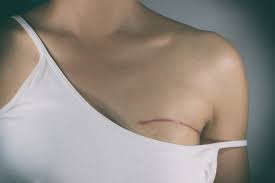By Nutritionist Craig Stellpflug
My wife and I moved to Blaine from Phoenix, you know, “The Valley of the Sun”. Snow birds go South for the winter but we moved North… I guess that makes us Do-Do birds? Phoenix definitely has more sun than Blaine and consequently, one thing Phoenix has less of than Northwest Washington is Seasonal Affective Disorder (SAD), a mood regulation disorder caused by a sunshine Vitamin D deficiency.
According to the Mayo Clinic website, symptoms of SAD are: Feeling depressed most of the day, nearly every day; Losing interest in activities you once enjoyed; Having low energy; Having problems with sleeping; Experiencing changes in your appetite or weight; Feeling sluggish or agitated; Having difficulty concentrating; Feeling hopeless, worthless or guilty; Having frequent thoughts of death or suicide. https://www.mayoclinic.org/…/symptoms-causes/syc-20364651
But Vitamin D is so much more than a mood regulator as it is also critical for immune system function—working against colds and flu with a one-two punch to both reduce levels of inflammatory proteins as well as increase amounts of antimicrobial proteins that destroy invading pathogens. In addition to helping to stave off flu goobers, adequate D levels protect against heart disease, osteoporosis, bone breaks, premature aging, anemia, kidney stones, heart disease, brings a 50% reduction in incidence of tooth decay and so much more.
Here’s one for you: D is also a huge player in cancer treatment and prevention because Vitamin D receptors are found on the surface of cells that direct a cell to either divide or die. According to Joseph Mercola, M.D., D works by: Increasing the self-destruction of mutated cells; Reducing the spread and reproduction of cancer cells; Causing cells to become differentiated (cancer cells often lack differentiation); Reducing the growth of new blood vessels, which is a step in the transition of dormant tumors turning cancerous. Vitamin D in the bloodstream is converted to calcitriol used to repair damage to organs and cells, including damage caused by cancer cells and tumors.
Technically speaking, D is actually a fat-soluble vitamin meaning it is stored in fat tissues and released slowly. The body is able to store D for a continuous supply that should last 6 months—enough to get you through a Washington winter if you start out with enough D in the fall. The best form of D comes naturally from our old friend, the sun. 20 minutes a day of full-body sun in the summertime will help maintain a healthy body. Not easy to do in Blaine, WA in the wintertime though. Dietary sources of D are fatty fish, fish liver oils, mushrooms, eggs and raw milk.
An “RDA” (Recommended Daily Allowance) is the minimum requirement a healthy person needs of any particular nutrient to prevent disease—not the amount for reaching optimal health or for disease recovery. The RDA for Vitamin D is 400 IU daily, but this won’t help you recover from D deficiency. Perhaps RDA should mean “Ridiculously Deficient Amounts” because to prevent D deficiency damage in the rainy Northwest winter may require up to 10,000 IU daily. Always remember that RDA doesn’t promote optimal, vibrant health—it merely prevents disease in a healthy person. If you are deficient and are sick, it will take a lot more than RDA to catch up.
There is no “cookie cutter” formula for how much D to take as everyone metabolizes their D differently. I suggest first getting a Vitamin D blood level test done and if you are low then supplement for a few months and recheck. (I personally take about 50,000 IU’s a week in the wintertime.) Optimal blood levels for D are 30 ng/ml or higher in my world. (I personally like to see D levels closer to 50 ng/ml in my patients.) If you are in any kind of a cancer battle, you will need blood levels of D to be at least 80 ng/ml to recover. If you are already SAD, sick, or have a cancer diagnosis, find a doctor or nutritionist that understands the vital importance of D and make them your best friend—for life. Even if you are seemingly healthy, spend the money, get your D levels checked.
If you don’t have enough D then supplementing with Vitamin D3, cholecalciferol is what you need. Be sure you are buying natural Vitamin D3 (cholecalciferol) and not the synthetic, side-effect ridden Vitamin D2 (ergocalciferol). (HINT: Most vitamin D prescriptions are for ergocalciferol…) Avoid D made with GMO soybean oil and always keep in mind that any supplements you take are just that—supplements—only to be used as a stop-gap measure while you find and fix the original deficiency in the diet or deficiency caused by lack of sunshine in this case.



